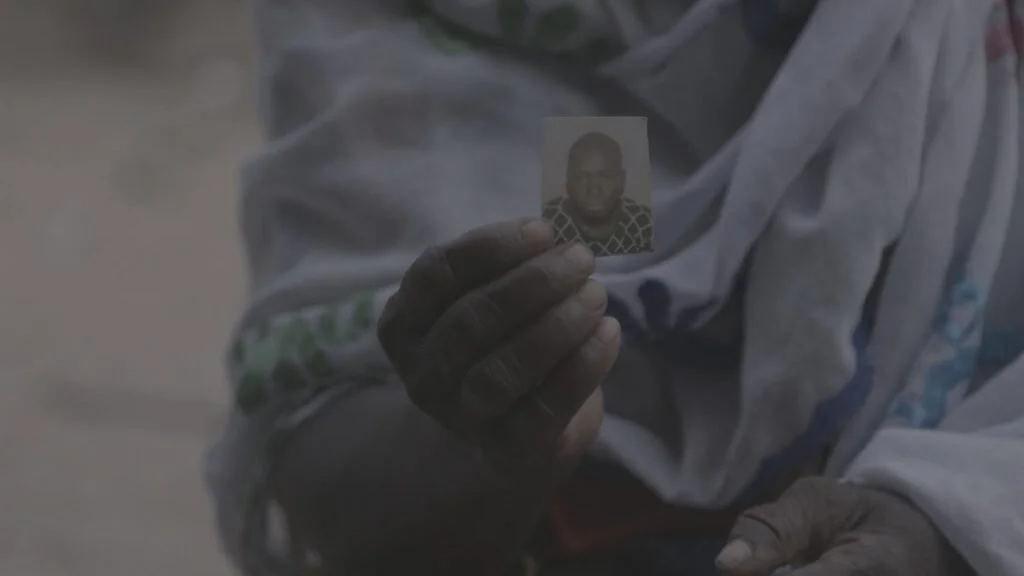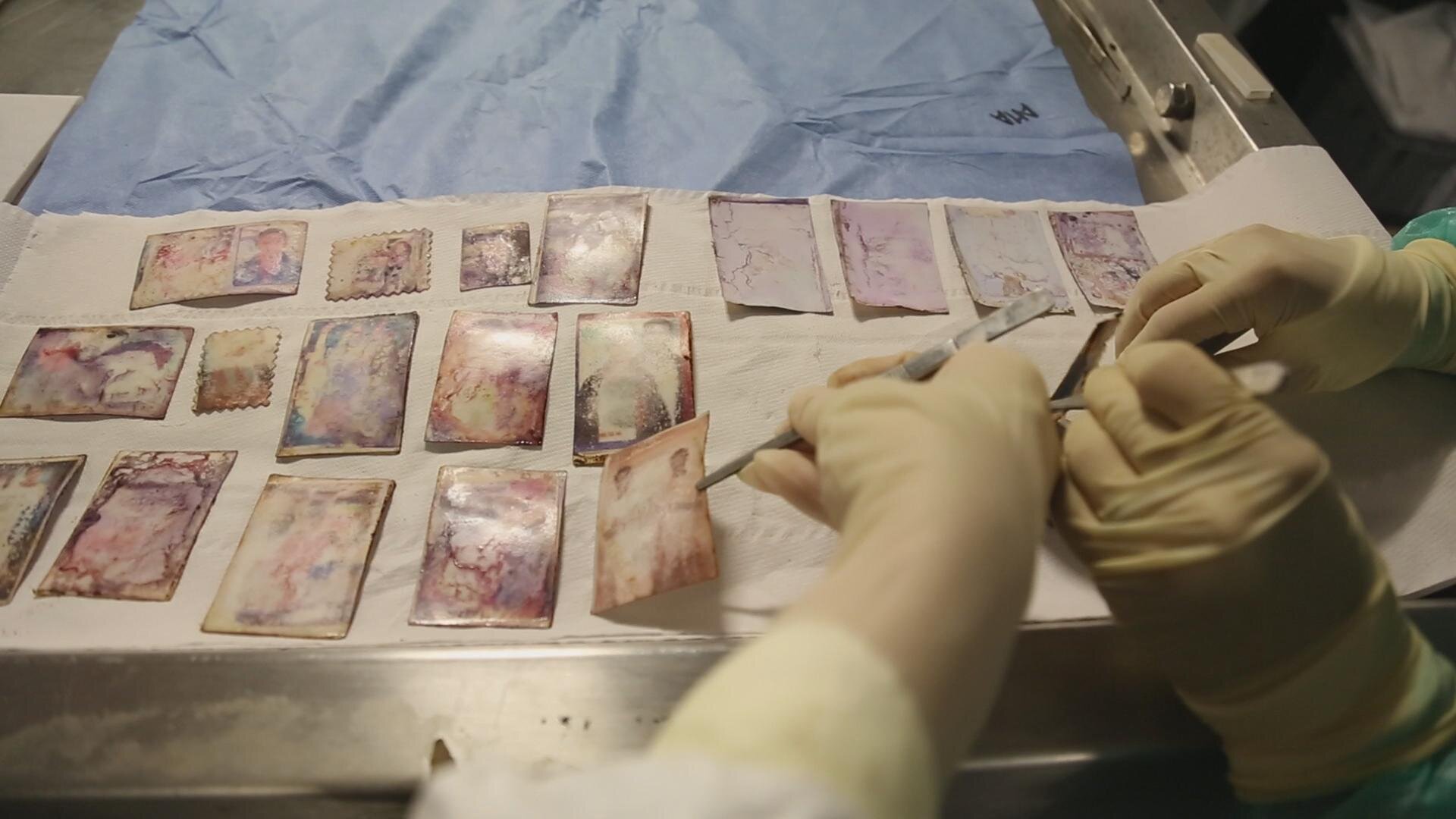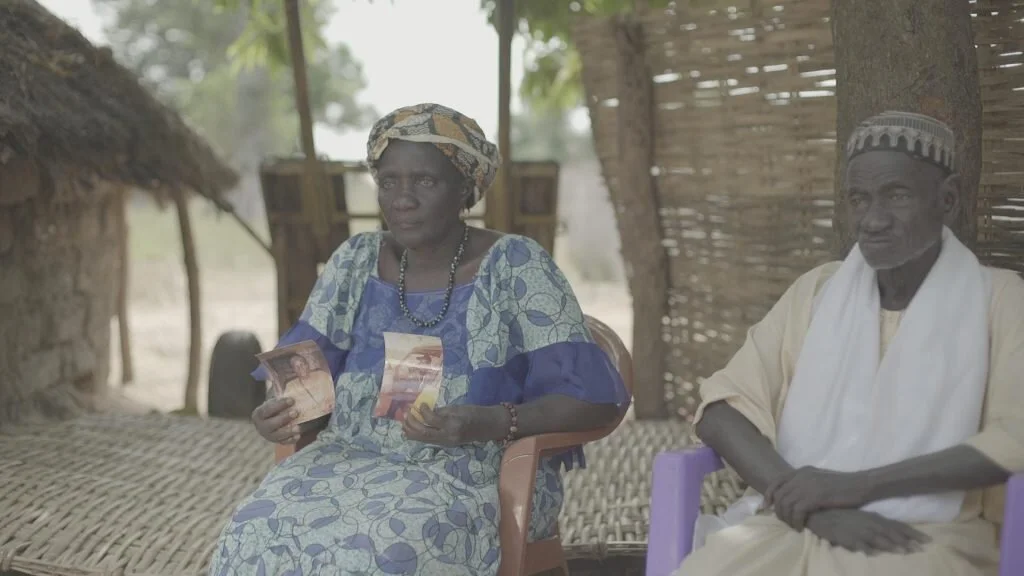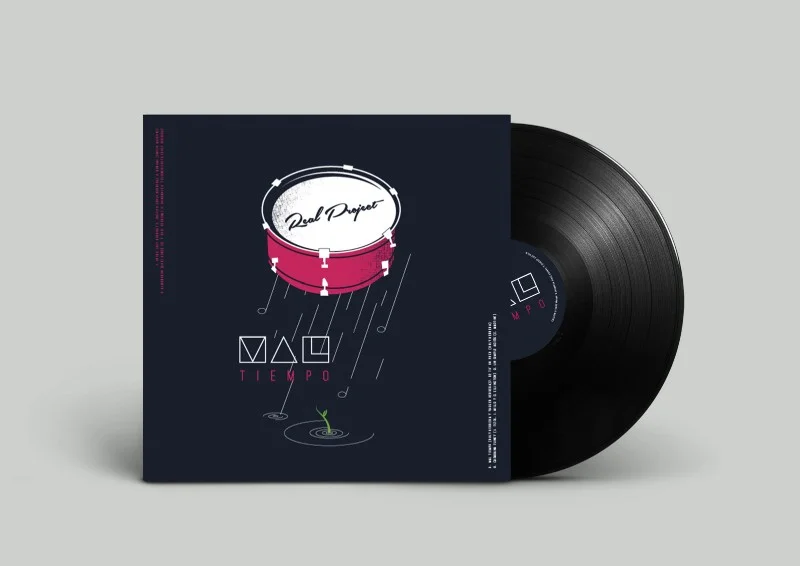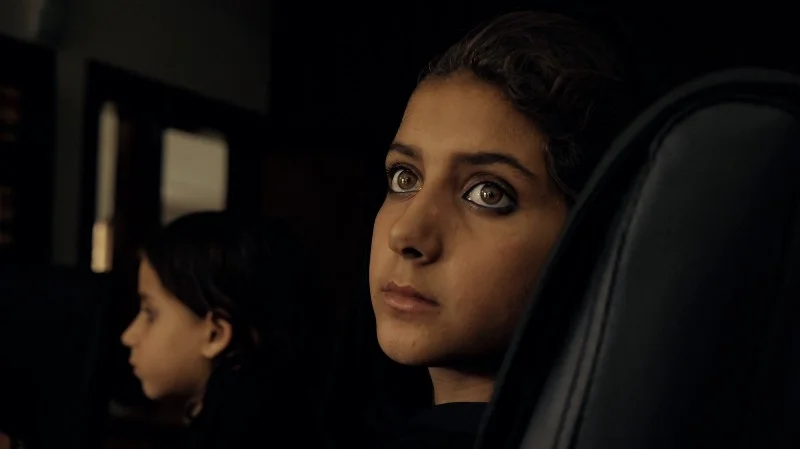‘Documentaries Give You the Space and Time to Work Differently with the Characters’
Madeleine Leroyer’s debut documentary #387 depicts the less known side of what has become known as the ‘migrant crisis’. It provides insight into the investigation of identifying those who tried to cross the Mediterranean but lost their lives in April 2015. Besides capturing the work done by a dedicated team to bring justice to the absent ones, the film also amplifies the voice of friends and family members, and those who survived. The documentary premiered at the International Documentary Film Festival Amsterdam in 2019 and the team is currently working on their impact campaign #numbersintonames to show the film to as many people as possible across continents. I sat down with Madeleine to talk about her film and her shift from journalism to documentary filmmaking.
Madeleine Leroyer
While watching #387, I thought it was so different from many of the documentaries I’d seen about migration and/or refugees. How did the film come about?
I started the research process in the summer of 2015, which was the peak of what the media called the migration crisis, which I don’t think is a crisis. There is a crisis of mortality, for sure, but I don’t see migration as a crisis. Migration is constitutive of humankind and humanity. Anthropologists explain very well that being sedentary and being on the move is a couple that characterizes humanity. I was indeed shocked by the numbers and the impossibility to relate to those numbers. They are abstract. They’re shocking, but they sort of don’t mean anything. They don’t even fully comprehend the reality of this tragedy. Nobody really knows the exact number of people who went missing or died on their way to Europe. Some organizations, such as the Dutch NGO UNITED or the International Organization for Migration (IOM), have been counting it, but the truth is that nobody knows for sure. A lot of deaths go unnoticed and unreported – whether at sea or in the Sahara Desert. So the first intent was to go beyond numbers and focus on individuals, on dignity.
How did the team come together?
After some basic research, I contacted my producer, Valérie Montmartin. She was the only one I knew; it’s my first film. I worked with her on a journalistic project before, but I had no idea that she was co-producing international documentaries as well. I just went to her because I thought that she would click with the idea that something was happening in the Mediterranean, at our borders, that we didn’t feel and we didn’t face. As I worked on my first intent in the summer of 2015, I talked to her and quickly enough I contacted Cécile Debarge who is the co-author of the film. She’s a journalist based in Palermo and has previously worked on the issue of border deaths. We sort of updated her work and went further. She was really a tremendous help for the Italian and Sicilian part of the film.
How did you develop the film?
It really started with research and writing. This is a film we wrote. Obviously, it doesn’t look like what we wrote, but the intent, Cécile’s and mine as authors, is very present, I think. And I’m proud of this. We got a little bit of money at the beginning of 2016 to do our first trip; we did several research trips that year. I started filming because at the time we had no money for a cameraperson. I filmed the opening scene that you see in the film and Cécile worked on the sound. Once we got that first scene, we were able to edit the trailer that took us on a world pitching tour.
Was it easy to get funding for the film?
We pitched the film in many places and gradually got very large support. We completely reversed the initial stance ‘not another film about migrants’ that was very much present when we first discussed the film with potential broadcasters in the fall of 2015. The research, the writing, the power of the intent and the anthropological and philosophical questioning about identity and loss are what made the difference. At some point, we could really feel the switch in the way the project was seen by commissioning editors, and we could enter production at the end of 2017.
The film is about an hour long, but I assume you had more footage. How much were you able to film at the various locations?
2017 and especially 2018 were active. We filmed in Mauritania, and Senegal where we went three or four times in total. We also went to Greece, but that’s not in the final cut. There is a wonderful character, a forensic pathologist, working at the border between Greece and Turkey in Alexandroupolis (north-eastern Greece). I spent quite a lot of time with him. I thought he could be an allegory of the solitude of these margins of Europe who are faced with migrant deaths. In the end, it was too far away from the central narrative, so that part didn’t make the cut.
You worked as a journalist before. What motivated you to explore the world of documentary filmmaking?
It’s a combination of things. Back when I was a journalist in Russia, I started to work with video and TV. I was a researcher and co-director, but primarily a researcher on two stories that were my investigations. One I’m very proud of is a story about torture in Russian jails. That investigation was a turning point for me. That is when I discovered the power of the image where the person doesn’t speak but you understand everything. In general, I also felt a bit frustrated by the ethics of journalism where you take a lot but don’t give a lot back. I think something in me was looking for a more balanced relationship with the people in the stories – where you have to put more of yourself in the work and not only suck people’s lives.
It’s a bit radical what I’m saying… I’m proud of my work as a journalist, but something in me was still looking for a different approach. And it’s also true that some stories never make it to the news. In the news, you would hear the numbers regarding migration and see the victims portrayed in a certain way – like the person is typically framed as a victim with no agency. Documentaries give you the space and time to work differently with the characters. They can be more complex, more than just victims. They can have (more) agency.
Did the transition, if we can call it such, go smoothly?
I became a documentary filmmaker in the making of this film. The research and writing process was key. I know that a lot of filmmakers are very reluctant. They want to go fast, they want to finish their first trailers as soon as possible. In my case, that was really helpful. You have to make your choices, and some choices were super important for us to make: the fact that we would never show human remains or that we would film the forensic pathologist working in a certain way. We also reflected on how we would work with the witnesses, survivors, and family members. Without these choices, you would have got a completely different film.
Was it difficult to convince people to be part of your film?
I had to put myself on the line and explain literally to everyone who I was, where I was coming from, why I wanted to do this, how I wanted to do this, and build trust over time. We’re talking about several years of being in contact and building trust.
How did you meet your main protagonists and what was it like working with them?
Some of the characters were there at the very beginning of the research process, some went away, and some I met literally in the last two months of filming. We met forensic scientist Cristina Cattaneo and Sicilian researcher Giorgia Mirto during the research process. It was beautiful the way Giorgia and we grew up together. In the process of being in the film, she connected the dots that perhaps weren’t that clearly connected in her personal story. This is why she agreed to talk about her grandfather’s story, which she wouldn’t have agreed to earlier in the process. We had long talks. She also became very close to Cécile, so all of this ‘backstage process’ was really important. José Pablo Baraybar, who is the Transregional Forensic Coordinator at the International Committee of the Red Cross (ICRC), came later. I think he saved the entire thing. I think nothing would have happened if the ICRC hadn’t hired him. He has a very peculiar background. He’s worked as an investigator for the United Nations (UN) and several international courts on war crimes and crimes against humanity. He wasn’t in the initial scripts, and I struggled a lot to define his arch in the story and his articulation with the other protagonists. That’s the beauty of non-fiction, but that was a really big challenge for me.
What about the other protagonists?
We filmed Ibrahima Senghor, the Senegalese witness whom I first met in 2017 and who provides the names of his friends, on three occasions: in June 2017, in November 2017 and in March 2018. In the final cut, he has only a very short scene, but he’s there along the way. The first sentence we hear in the film is his, and he comes back in the edit several times. It’s interesting what was happening with him. It was very beautiful the way he evolved over time and during filming. Obviously, I’m not in the position to say that it’s only thanks to the process of making the film, but I could see the change. He was living not as an outcast, but he was considered a failure in his village, in his community. He returned and he had to start over from scratch. Being able to open up and share his story, I think, gave him some confidence he had lost during his trip to Libya and back. Now he’s actively taking on research and he is a kind of ambassador in his village in eastern Senegal.
Things were different with Abraham Tesfai (Eritrean activist) and Tariku Ftwi (survivor). I met Abraham in September 2018, at the end of the process, when he met José Pablo. After the first scene, the two of us sat for a very long time and I explained everything to him. In that matter, he was the quickest and the smartest to understand the participation in the search and the opportunity of being in the film. He took us to Tariku whom I spoke to over Skype a few days prior to visiting Berlin where he lives. I think he understood that it was going to be painful, but he decided to participate in the search process and in the film, for the sake of remembering and honouring his friends. I’m tremendously thankful to all of them. It was a lot to give, and it’s very precious what they all say.
What were your experiences with the family members like?
When we started to work in Senegal, I was very much afraid that people would not want to open up. Also, two years had already passed since the shipwreck. I think something very powerful happened because we came with questions that nobody had asked before: questions about individuals and how they were being missed. The police, for example, interrogated the survivors, but the interrogations had a very specific purpose: putting the captain of the ship and the assistants behind bars. Nobody asked detailed questions about who was on the boat. From the police’s point of view, there was enough evidence to qualify the crime. You don’t need the identity of the victims to do that. I sort of disagree with that. If we don’t know the names and the real story, we can’t face the actual extent of the crime and fully comprehend the responsibility behind it.
Tariku Ftwi and Abraham Tesfai
I’d like to go back to Giorgia a bit because that scene when she talks about her grandfather and the Italian mafia really stood out to me. It’s such a powerful one…
Giorgia shared her story with Cécile and me very early in the process, back in 2016. But, at that time, she wasn’t comfortable with it; she wasn’t sure she wanted to connect the dots like this, or put herself ‘forward’. With the passing of time, all the talking, the pasta corta, and the mutual trust, she came to that point where she was ready to share it. She was the one who invited me to her grandparents’ apartment. I feel blessed that she and her mother opened that door. That was a very special moment. Then it was difficult to work with it in the editing room. It could have been too demonstrative, so it had to be subtle; it had to come at the right time in the film. It was not that easy.
For example, Abraham really clicked with that scene when he saw the film. He attended the premiere and someone asked: ‘Isn’t there a risk of re-traumatising people when you do such a work?’ The person was referring to both the forensic work and the film. I didn’t even have to answer as Abraham took the microphone and replied to the audience member: ‘You saw that scene with Giorgia and the story of her grandfather. This is why we’re doing this. Because missing people are missed over time. And it can be a long time. It can be four decades. It’s not like “Oh, tell me about your friends who died!” We’re doing it with a purpose and in that sense the memory is functional. Nobody is such a masochist that activates trauma just for pleasure. You struggle with your demons and you open up when you’re in a safe place and when it has a purpose.’
Speaking of trauma and re-traumatisation, did you do some research on psychological studies related to trauma to learn about how to interact with people suffering from it?
I did, but I’m not a psychologist. I cannot say that I read everything or that I was fully prepared because you are not turning into a psychologist just by reading books. I am very respectful of the work done by people who work with trauma. I’d add, though, that I noticed that many times trauma is used as a very convenient excuse to not do anything. In the humanitarian world, people are obviously well intentioned, but sometimes it’s also used as an excuse not to move. I think this is related to the white saviour complex that deprives the ‘beneficiaries’ of their own agency, and, more generally, to the reluctance to face death in our Western societies. A lot of people are afraid. They can feel the pain of their interlocutor, but they’re afraid to hear it. They feel they need to respond. However, the person in front of them is not necessarily calling for a response but perhaps for recognition as a beginning.
How did you work with your protagonists in this regard?
I always made it clear to them that if they wanted to stop at any point, they were free to do that. It was always very transparent. I could see some of them changing over time and getting back on their feet. And, yes, I can say that speaking the unspoken is a healing process. I do believe in this, but I’m not a therapist. From where I stand and I know my boundaries. I can tell what I lived and what I experienced sharing these moments with these people, but film is not therapy. Also, refugee trauma is absolutely not properly taken into account in Europe, which could become extremely dangerous in the long run. Not all people are that resilient. This is something that needs to be improved, but this is the subject of another conversation.
At the beginning of our conversation, you mentioned that the final film is not what you planned. What changed throughout the process?
The intent and the atmosphere are the same, but the scene and the action differ. This is the magic of reality unfolding and happening when you’re there to grasp it. What I learnt during the editing process is that less is more. We had a lot of footage, a lot of directions, and it was super difficult to construct a solid narrative backbone. As a first-time filmmaker, my biggest flaw was that at some point I wanted to show that I did the job. The editing process was a good cure for that because the film is not about me or about how I worked to make it; it’s about the people in the film – the present ones and the absent ones. Getting rid of things and going to the core of what I wanted to say was really enlightening.
You explained how some protagonists didn’t make the cut. When did you start the editing process?
The editor, Tania Goldenberg, got fully immersed in the process early on and that was very precious. In the fall of 2016, we started looking at the material and she edited the trailer. In 2017, we had a few weeks together when we reviewed the footage. The film was very difficult to make. I had to constantly lobby, fight and renegotiate access, primarily with the ICRC, but not only with them. Working with Cristina (the forensic scientist) was not always easy. Being in the editing room with Tania was great; it was sort of an anchor moment when you could see that the power of the film was beyond the technicalities and the difficulties you had to face while directing a film.
You’ve also mentioned that film is not therapy. But do you think it could facilitate any change on a political level?
I do not expect much, and I am not overoptimistic. Missing migrants are not fully accepted as missing persons on the international humanitarian agenda. There is a reluctance to include them in the bigger portfolio of missing persons. On the political level, there is no magic trick. There is no one person whom I could show the film and who could make a decision and all of a sudden people would not die and all the dead would be identified. It’s a complex issue. The effort we see in the film is sort of pioneering, and it needs to be encouraged and systematized. We need to work a lot on building a critical mass of people who are aware of the situation and who are ready to take action. What I can do as a filmmaker is to push for more conversations so that the film becomes a vehicle for change. This is what we’re doing with our campaign #numbersintonames. With my producer, we’ve started reflecting on impact producing as soon as we entered production, which was the end of 2017.
The film can open discussions: for people on the front line, for example, who can act differently and start sharing information. A lot of people have information about the missing and the dead they do not share. It needs to be shared in a safe place, far away from the police. That’s one thing. The other thing, which is very important and I’m working on it very actively at the moment, is to bring the film to the families, to the witnesses, to the survivors – both in the countries of origins and in Europe. So there will be not just one but many Abrahams. I think this is crucial because, once again, these people have agency. It’s not that they’re sitting stupidly waiting for the big white saviour to bring them answers. It has to be done collectively. I think this is also very strongly present in the film: the collaboration between people. It’s key, just like the fact that everyone matters. A poor farmer in Senegal is as crucial as the boss of the ICRC. So the aim of the campaign is to foster truly shared advocacy by redefining allyship – just like we see in the film.
Are you planning to organize local screenings in the villages?
Yes, absolutely. We’re building a mobile cinema circuit to bring the film to first Senegal, Mali, and Mauritania. We’re doing it with young Senegalese journalist students who will join me. We will film the reactions after the screenings and edit very short clips for social media in order to boost this campaign. I hope it happens in mid-2021. The film will be screened with subtitles, or we screen a dubbed version of it. Each screening will be introduced by a local gatekeeper who will prepare their community to receive the film. We’re working very carefully on the mediation part of the project because what we want to achieve is shared experience and shared advocacy.
